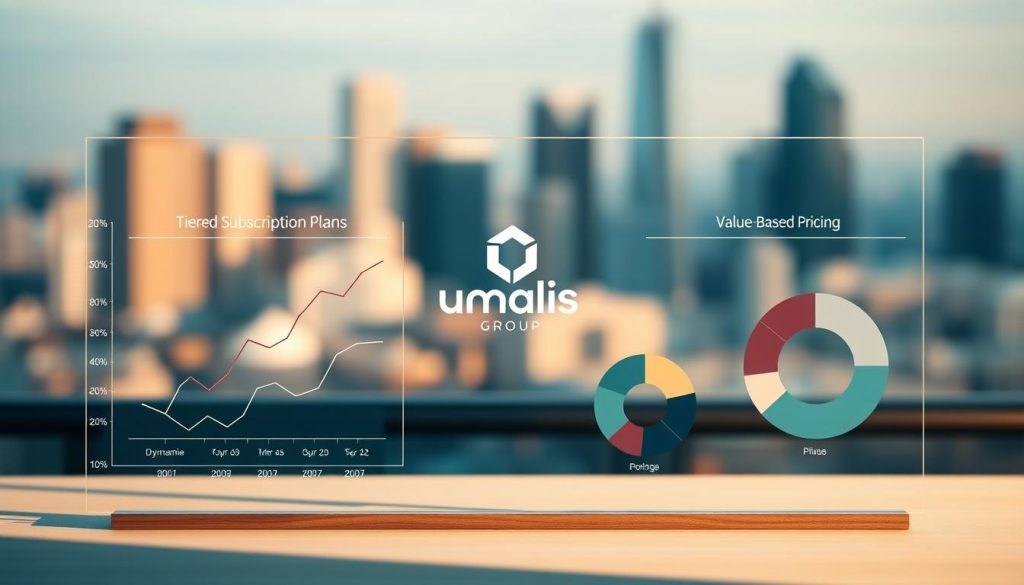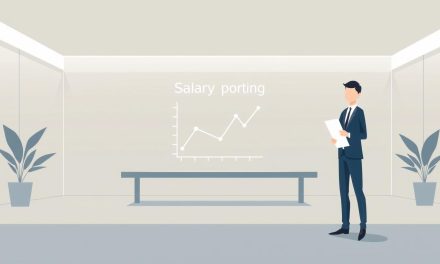Did you know acquiring a new customer costs 5–25 times more than keeping an existing one? For independent professionals, this gap isn’t just a statistic—it’s the difference between thriving and scrambling. Research reveals 80% of future revenue comes from just 20% of your current clients, making loyalty the engine of sustainable growth.
In competitive markets like France, stability hinges on predictable income. For B2B professionals, retained relationships deliver 70% more reliable revenue than new deals. This isn’t about shortcuts—it’s about building trust that withstands economic shifts.
Why does this matter? Your ability to nurture connections directly impacts your independence. Think of retention as a shield against uncertainty and a ladder for scaling. We’ll explore actionable methods to strengthen these bonds while aligning with your unique values.
Table of Contents
Key Takeaways
- Retaining customers isn’t optional—it’s a core business priority.
- Existing relationships generate 80% of future profits.
- Predictable revenue grows from loyalty, not constant sales pitches.
- Effective strategies protect against market changes while fueling growth.
- A tailored framework ensures methods align with your professional goals.
Understanding the Importance of Client Retention
« The math is simple—nurturing relationships costs less than chasing replacements, » notes a Harvard Business Review analysis. For independent professionals in France, prioritizing existing partnerships isn’t just practical—it’s strategic survival. When you focus on keeping customers engaged, you unlock two powerful advantages: financial efficiency and sustainable momentum.
Lower Customer Acquisition Costs
Hunting for new customers drains resources. Studies show acquiring one new client costs 5–25x more than maintaining current ones. Imagine redirecting those funds into skill development or service upgrades instead. For example, a consultant could use saved marketing budgets to offer personalized training modules for loyal accounts.
This shift creates a ripple effect. Lower acquisition stress means more energy for deepening trust. You’ll spend less time pitching and more time delivering measurable results—a key differentiator in France’s competitive B2B landscape.
Predictable Revenue Growth
Retained customers aren’t just stable—they’re growth accelerators. Data reveals they spend 67% more over three years through repeat purchases and expanded contracts. A graphic designer might start with logo creation, then gradually handle branding packages and web design for the same client.
This predictability lets you:
- Forecast earnings confidently during economic shifts
- Invest in long-term professional development
- Build referral networks through proven results
By mastering these principles, you transform transactional interactions into enduring partnerships. The outcome? A business that thrives on mutual value rather than constant sales pressure.
What is Customer Retention and Why It Matters
At its core, customer retention represents the deliberate practice of nurturing partnerships that evolve alongside businesses. Unlike transactional relationships, it focuses on mutual growth—where every interaction reinforces shared goals. As one industry leader observes: « Retention isn’t about contracts; it’s about becoming indispensable to someone’s success. »
Building a Unified Customer Experience
A unified experience starts with deep listening. For example, a marketing consultant might notice a client’s expanding product line and proactively suggest multilingual campaigns—anticipating needs before they’re voiced. This approach transforms standard services into tailored solutions.
Three pillars define this strategy:
- Consistency: Aligning communication styles across emails, meetings, and deliverables
- Adaptability: Adjusting methods as business priorities shift
- Transparency: Sharing progress metrics openly to build accountability
In France’s relationship-driven market, professionals who master these elements gain referrals naturally. A survey by Paris-based B2B analysts found 68% of long-term collaborations stem from perceived reliability rather than pricing. Your ability to demonstrate unwavering support during challenges—like supply chain disruptions—cements your role as a strategic ally.
Ultimately, retention thrives when customers feel understood, not just served. By embedding their objectives into your workflow, you create partnerships that withstand market turbulence and fuel sustainable independence.
Effective Client Retention Techniques
Sustainable partnerships form the backbone of resilient businesses. Recent studies highlight 20 methods that boost satisfaction and loyalty, from personalized onboarding to predictive analytics. The key lies in adapting these approaches to your industry’s unique demands while maintaining authenticity.
Custom Solutions for Lasting Impact
Generic methods rarely work across diverse fields. A financial advisor might use quarterly strategy reviews to maintain engagement, while a UX designer could offer iterative prototyping sessions. What unites successful approaches? They address specific pain points while aligning with your operational style.
| Industry | Adapted Strategy | Outcome |
|---|---|---|
| Consulting | Co-created quarterly roadmaps | 23% higher renewal rates |
| Creative Services | Brand evolution workshops | 41% cross-selling uptake |
| Technical Fields | Preventive system audits | 67% faster issue resolution |
Data-driven adjustments prove critical. Analytics reveal that partners receiving monthly progress reports stay engaged 58% longer. This transparency builds trust—especially in France’s relationship-focused markets.
Growth emerges when strategies create mutual value. Satisfied collaborators often refer others, expanding your network organically. One Marseille-based IT consultant gained 14 new projects through existing partner referrals last year.
Ultimately, your approach should feel like a natural extension of your expertise. When methods align with your values, they become sustainable advantages rather than temporary fixes.
Creating a Strong Onboarding Experience

What separates fleeting transactions from enduring partnerships? The answer lies in the first 90 days. Gartner reveals 60% of buyers experience post-purchase regret due to unclear timelines or unexpected costs—issues that derail 24% of contracts. A strategic onboarding process transforms this critical phase into your competitive advantage.
Tailored Beginnings Build Trust
Generic checklists won’t cut it in France’s relationship-driven markets. Instead, map onboarding to each customer’s operational rhythm. For example:
- Send industry-specific implementation guides before kickoff meetings
- Assign dedicated contacts fluent in the customer’s business jargon
- Schedule milestone reviews aligned with their fiscal calendar
This approach reduces anxiety while demonstrating expertise. As one Paris-based SaaS founder notes: « When you speak their language from day one, you’re not a vendor—you’re a co-pilot. »
Clarity Prevents Buyer’s Remorse
Ambiguity breeds distrust. Use these three steps to set transparent expectations:
| Phase | Action | Outcome |
|---|---|---|
| Pre-Onboarding | Share interactive timeline with cost breakdowns | 33% fewer support queries |
| Week 1 | Host alignment workshop with decision-makers | 19% faster approvals |
| Month 1 | Deliver progress report with risk assessment | 41% higher satisfaction scores |
Pair these steps with proactive communication frameworks to address concerns before they escalate. Customers who receive weekly updates during onboarding report 67% higher confidence in service quality.
By investing time in structured beginnings, you create advocates who expand engagements organically. Remember: onboarding isn’t paperwork—it’s the foundation of every successful partnership.
Identifying Warning Signs of Churn
Spotting trouble early separates thriving partnerships from costly breakups. Gartner finds 80% of confident buyers later regret purchases made during rapid scaling or with single decision-makers. Newer businesses (under 5 years) face particularly high churn risks—making vigilance your strategic safeguard.
Decoding Silent Alarms
Watch for these engagement shifts:
- Delayed email responses exceeding 72 hours
- Last-minute meeting cancellations without rescheduling
- Sudden scope reductions without clear explanations
For example, a Paris-based web developer noticed a customer skipping quarterly reviews. By addressing workload concerns early, they preserved a €15k/year contract.
High-risk profiles demand extra attention:
| Risk Factor | Preventive Action |
|---|---|
| Sole decision-maker | Monthly executive briefings |
| Rapid growth phase | Biweekly progress check-ins |
| New business ( | Custom onboarding extensions |
Data reveals customers receiving tailored support during transitions renew contracts 63% more often. Track login frequencies, service usage patterns, and feedback response rates through analytics tools.
Proactive measures build trust—clients who feel heard during challenges become long-term allies. As one Lyon-based consultant shared: « Saving one partnership often leads to three referrals. »
Utilizing Data to Drive Customer Success
« Data transforms guesswork into strategy, » states a recent survey of 400 French firms. When harnessed effectively, information becomes your compass for delivering exceptional value. By analyzing patterns in customer behavior and preferences, you gain actionable insights to refine your approach continuously.
Leveraging Customer Feedback
Feedback channels act as direct lines to your customers’ priorities. Consider these methods:
- Monthly micro-surveys (2-3 questions)
- Post-project debriefs with decision-makers
- Quarterly advisory board sessions
| Feedback Method | Frequency | Impact |
|---|---|---|
| Short surveys | Monthly | Identifies immediate concerns |
| Strategy reviews | Quarterly | Aligns long-term goals |
| Advisory panels | Biannual | Shapes service evolution |
Tracking Key Performance Metrics
Monitor these indicators to gauge partnership health:
- Engagement rates across communication platforms
- Project outcome satisfaction scores (1-10 scale)
- Referral likelihood in post-service surveys
| Metric | Tool | Purpose |
|---|---|---|
| Service usage | Analytics dashboards | Detect underutilized features |
| Response times | CRM systems | Improve support efficiency |
| Renewal patterns | Contract databases | Predict expansion opportunities |
A Paris-based IT consultant increased repeat engagements by 38% using this dual approach. They paired quarterly feedback sessions with real-time metric tracking, enabling proactive adjustments to service packages.
Rewarding Loyalty and Building a Customer Community
True loyalty isn’t bought—it’s earned through shared purpose. In France’s collaborative business culture, professionals thrive when relationships evolve into ecosystems of mutual growth. Modern loyalty strategies blend recognition with belonging, turning transactions into partnerships that outlast market fluctuations.
Beyond Points and Discounts
Effective programs reflect what partners truly value. A Lyon-based HR consultant offers priority access to industry reports instead of generic coupons. Another firm provides VIP advisory seats for long-term collaborators. These tailored rewards demonstrate deep understanding—a cornerstone of lasting connections.
| Tier | Benefits | Outcome |
|---|---|---|
| Silver | Biannual strategy reviews | 28% engagement boost |
| Gold | Exclusive mastermind access | 51% referral increase |
| Platinum | Co-branded case studies | 73% contract renewals |
Communities amplify these efforts. A Paris IT firm hosts quarterly roundtables where customers troubleshoot challenges together. This creates peer networks while positioning your practice as the hub. Participants often share resources discovered through your events, organically expanding your influence.
Combining rewards with belonging transforms customers into advocates. When paired with comprehensive client needs analysis, these strategies build self-sustaining networks. One Marseille consultant gained 9 new projects last year through community-driven referrals—proof that invested partners become your strongest growth engine.
Optimizing Pricing Strategies and Incentives

Your pricing structure should mirror your clients’ growth journey. Scalable models paired with transparent communication create partnerships where value evolves alongside needs. Research shows 20% targeted discounts boost repeat purchases 37% more effectively than standard offers—proof that smart incentives drive loyalty.
Flexible Pricing Models
Adaptable tiers prevent budget mismatches. Consider these approaches:
| Model | Best For | Retention Impact |
|---|---|---|
| Usage-based | Seasonal businesses | 29% renewal boost |
| Tiered packages | Scaling startups | 41% upsell rate |
| Annual prepay | Established firms | 63% commitment |
Store credits outperform percentage discounts in France’s service sector. A Lyon-based designer increased repeat bookings by 55% offering €500 credits instead of 15% off.
Promotional Offers to Keep Customers
Timing transforms discounts into retention tools. Analyze purchase cycles to deliver offers when customers evaluate alternatives. Monthly subscription businesses benefit from loyalty accelerators—extra features at month six, not discounts.
Effective incentives share three traits:
- Aligned with specific business milestones
- Delivered through preferred channels
- Paired with clear expiration dates
Transparency remains critical. Paris consultants using upfront cost breakdowns report 44% fewer disputes. When customers understand pricing logic, they perceive fairness—a key driver of long-term collaboration.
Enhancing Customer Communication
Clear communication bridges gaps between expectations and reality. In France’s relationship-driven markets, regular touchpoints transform casual buyers into invested partners. Strategic messaging builds trust while reinforcing your brand as a reliable resource.
Crafting Engaging Email Campaigns
Personalized emails drive 6x higher engagement than generic blasts. Segment your list by industry or project type. For example:
- Send monthly case studies to customers in scaling phases
- Share compliance updates with regulated sectors
- Celebrate partnership anniversaries with custom insights
A Lyon-based marketing agency increased open rates by 41% using role-specific subject lines like « CEO Guide: Q4 Tax Strategy Changes ».
Utilizing Social Media and Reviews
LinkedIn proves vital for B2B support. Share quick tips through carousel posts—78% of French professionals prefer visual information. Respond thoughtfully to reviews on platforms like Trustpilot, turning feedback into public testimonials.
When customers mention your services online:
- Acknowledge their post within 24 hours
- Offer actionable next steps privately
- Request permission to showcase success stories
This dual approach strengthens marketing efforts while demonstrating commitment to satisfaction. Remember: Consistent communication isn’t noise—it’s the rhythm of lasting partnerships.
FAQ
Why is retaining existing customers cheaper than acquiring new ones?
Research shows retaining buyers costs 5-7x less than attracting new ones. Loyalty drives predictable revenue streams while reducing marketing spend. Existing relationships also yield higher conversion rates for upselling.
How does onboarding impact long-term loyalty?
Strong onboarding sets expectations, builds trust, and reduces early churn. Personalized guidance during this phase increases product adoption by 74% according to Wyzowl. Clear tutorials and checklists help users see value faster.
What metrics signal potential customer churn?
Watch for declining login frequency, reduced feature usage, or delayed support responses. Tools like HubSpot track engagement scores, while feedback tools like Delighted identify dissatisfaction before cancellations.
Can customer feedback directly improve retention strategies?
Yes. Analyzing reviews and survey data (NPS, CSAT) reveals pain points. Companies like Zendesk use this data to refine workflows, leading to 22% higher renewal rates. Address recurring complaints through service updates or policy changes.
What loyalty incentives work best for professional services?
Tiered rewards programs with exclusive resources (e.g., LinkedIn Learning access) outperform generic discounts. Adobe’s Creative Cloud community forums increase engagement by 40%, showing peer networks boost retention.
How do pricing models influence retention rates?
Flexible plans (monthly/annual) reduce financial friction. Dropbox’s freemium model retains 30% more users by letting them test premium features. Limited-time upgrades or bundled services create urgency without devaluing offerings.
What communication methods strengthen client relationships?
Personalized email workflows with relevant tips (Mailchimp’s segmentation tools) improve open rates by 60%. Publicly responding to social media mentions (Hootsuite’s case studies show 3x faster resolution times) builds transparent rapport.





